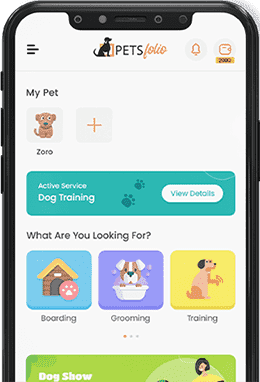Precautions while Buying the Miniature Punganur Cow: A Complete Guide
A breed of cow well-known for its compactness, in which the milk is proportionally yielded to its weight is that from Punganur in the Andhra Pradesh, India.
This tiny cow is popular because it is cost-effective, adaptive to varying climatic conditions and symbol of traditional farming but before making a purchase there should be careful consideration toward making a purchase of a Punganur cow in ensuring that you do purchase a healthy and real one.
This article talks about how one needs to be safe and cautious before getting a miniaturized Punganur cow.
These steps will incorporate a proper breed, take proper care for its health, and understand its rearing activities.
- Characteristics of the Punganur Cow
- Characteristics of the Punganur Cow
- Health Evaluation of the Cow
- Check Adaptability to Your Climate
- Evaluate Your Readiness
- Negotiate Fair Price
- Ethical and Sustainable Practices
- Long-term Care

1. Characteristics of the Punganur Cow:
In order not to be misguided by selling owners who would offer mixed breed or a non-original one, understand first what the typical features of the Punganur cow are.
The defining characteristics of a Punganur cow include:
The Adult age is 70-90 cm at the shoulder; height.

Color: White, pale gray coats with some areas containing brown or black marks; color.
Horns are short, crescent and backwardly pointing.
Even though they are not the height of giants, they provide 3 to 5 liters of milk a day, rich in fat contents. The content can reach 8 percent for some breeds.
Temperament: Punganur cows are docile.
Knowledge of these characteristics can facilitate distinguishing the real Punganur cows from knockoffs.
2. Genuine Cow Identification:
The most substantial challenge for buyers is the establishment of authenticity since hybrid breeds market their products under the very same name.
For validation, consider the following aspects:

Source from Accredited Breeders: Buy only from registered and reputable breeders. Ensure that the recognized breeder is known through local agricultural or livestock authorities.
Request Pedigree Records: Request copies of records indicating the pedigree of the cow so that it is a purebred Punganur.
Veterinary/ Livestock Expert Verification: If you are a first-time buyer, seek veterinary or livestock expert verification for breed confirmation
3. Health Evaluation of the Cow
Healthy cows are very important for milk production and welfare. Inspect the cow’s health before buying it. Key health issues to check on include:
Physical Examination: The cow should not have any signs of illness, including skin lesions, swollen joints, or lameness.
Weight and Body Condition: Punganur cows are naturally small but should not appear emaciated or undernourished.
Reproductive Health: For breeding cows, ensure they are of breeding age of 1-2.5 years and free from reproductive disorders.
Milk Quality: Test the milk for fat content and ensure it is free from contaminants.
“Request… consult” is repetitive; consider rephrasing.
Request the vaccination and deworming records of the cow and consult a veterinarian for a pre-purchase health check.
4. Check Adaptability to Your Climate
The Punganur cow is highly adaptable to various climates, but sudden environmental changes can stress the animal. Ensure that the cow can comfortably adjust to your local weather conditions. Some precautions include:
Gradual Acclimatization: Introduce the cow to its new environment gradually, providing adequate shelter and care.
Adequate Nutrition: Ensure their diet includes locally available fodder and supplements to meet nutritional needs.
Regular Monitoring: Observe the cow for any signs of stress or illness after relocation.
5. Evaluate Your Readiness
Buying a Punganur cow involves responsibility. Review your resources and ability to care for the cow before buying:
Shelter: Provide a clean, well-ventilated, and secure shelter to protect the cow from harsh weather and predators.
Feeding Needs: Maintain an uninterrupted supply of good-quality fodder, water, and mineral supplements.
Veterinary Care: Organize regular veterinary check-ups and vaccinations for the health of the animal.
Legal Requirements: Adhere to local laws regarding ownership and transportation of livestock.
6. Negotiate Fair Price
The price varies according to the lineage and age of the Punganur cow as well as the milk yield of the cows. It must be understood to avoid an overpayment.
The above factors will affect the price
Pedigree: Purebred cows from known breeders are more expensive.
Age and Productivity: Younger cows with higher milk production potential are more expensive.
Breeder Reputation: Established breeders usually charge more for their livestock because of quality assurance.
Be wary of offers that seem too good to be true, as they may be unhealthy or not authentic cows.
7. Ethical and Sustainable Practices:

When buying a Punganur cow, consider ethical and sustainable practices:
Avoid Exploitative Breeders: Avoid buying from breeders who are compromising the welfare of the animal for their profits.
Adopt If Possible: Try adopting cows from rescue centers or organizations advocating for sustainable livestock farming.
Support Conservation: By purchasing from responsible breeders, you support conservation efforts to save this critically endangered breed.
8. Long-term Care
Miniature Punganur cow is a long-term investment requiring long-term care and commitment. Some essential aspects of care are:
Routine Health Checks: Regular veterinary visits ensure the cow remains healthy.
Breeding Practices: Overbreeding should be avoided and recovery time between pregnancies be given in abundance.
Community Support: Join local livestock farming communities or cooperatives to seek advice and support.
Conclusion
The miniature Punganur cow is a valuable asset for small-scale farms and rural homes because of its small size, high milk production, and adaptability. It requires caution when buying a healthy and authentic breed, but once done, with all precautions mentioned in the article, one can make an informed decision and enjoy the experience of having this unique versatile cow.
To explore in-depth knowledge about Punganur cows, characteristics, and care essentials, visit Petsfolio your trusted resource for livestock management and sustainable farming insights. Discover how these remarkable animals can enrich your life while ensuring their welfare and comfort in a new home.
Send us a Message
Enjoy this post?
Check out some more great articles and other content.
Once Diwali lights up homes across India, Nepal celebrates Diwali for dogs, a heartwa...
Read The ArticleDiwali is the festival of lights that symbolizes happiness, hope, and unity. The glow...
Read The ArticleOne of the joys of life is the possession of a dog. They give a sense of company, fid...
Read The Article
 Download App
Download App Join
Join Support
Support












